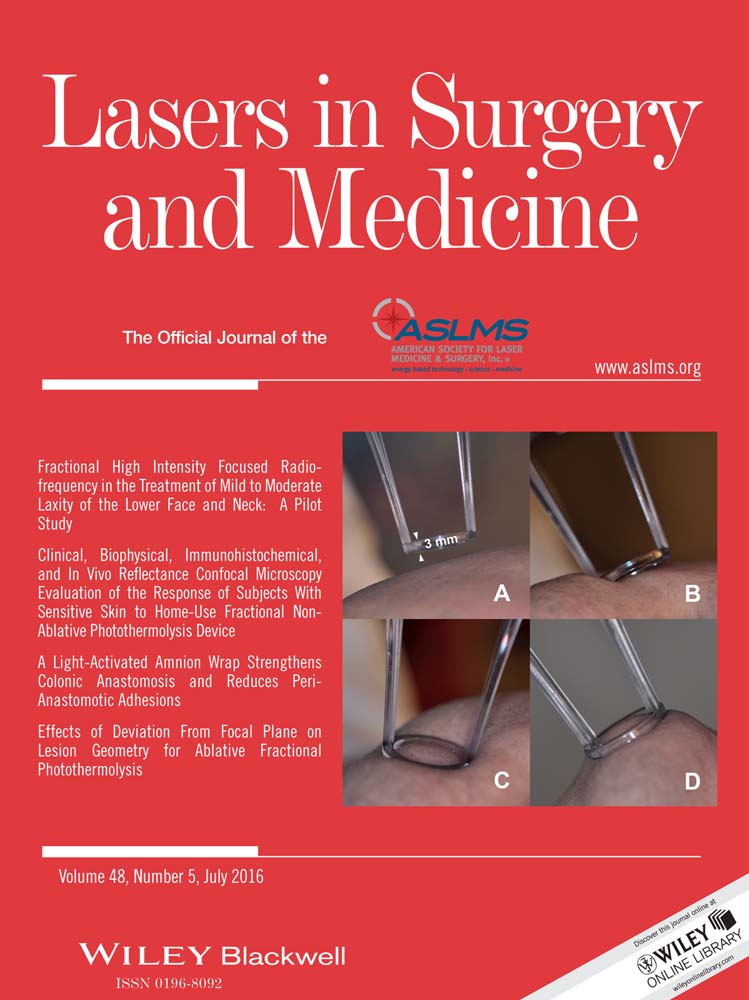Fractional high intensity focused radiofrequency in the treatment of mild to Moderate laxity of the lower face and neck: A pilot study
Abstract
Background and Aims
The aging process is commonly associated with skin laxity in the lower face and neck. Conventional surgery can correct this at least to some extent, but is invasive. Fractional high-intensity focused radiofrequency delivered to the dermis with insulated microneedles has recently attracted attention in facial rejuvenation. The present pilot study was designed to assess the efficacy of HiFR for skin laxity of the lower face and neck.
Methods
Thirty-three patients (7 males, 26 females, age range 37–74 years) with mild to moderate skin laxity of the lower face/neck participated in the study. Three treatments were given at monthly intervals with protocols developed by the authors, three passes per session, at decreasing dermal depths for each pass. Histologic assessment of skin immediately after treatment was performed to identify the site and area of damage in the dermis. Clinical digital photography was taken at baseline and at 6 months after the final treatment session, based on which standardized computer measurement of improvement in the gnathion and cervicomental angles was the primary objective evaluation. A global assessment of improvement was graded by blinded assessors based on the photography. A telephone survey of patient satisfaction was performed at 12 months post-treatment.
Results
A significant post-treatment decrease in the cervicomental and gnathion angles was seen of 28.5° and 16.6°, respectively (P < 0.0001 for both). Histology immediately post-treatment showed a clear demarcated and roughly oval area of coagulation associated with the tip of the needle, confined to the dermis and not involving the epidermis. In the global assessment 81.8% of the patients achieved moderate or higher results, and 87% of patients were very satisfied or better. Downtime was minimal, lasting 3–4 days, and no persistent adverse events were recorded.
Conclusions
Fractional HiFR proved safe and effective in the treatment of neck laxity in a large age range of patients, including the elderly. Lasers Surg. Med. 48:461–470, 2016. © 2016 Wiley Periodicals, Inc.




